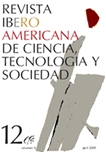Scientific and Technological Capabilities of Colombia for Advancing Bioprospecting Practices
DOI:
https://doi.org/10.52712/issn.1850-0013-865Keywords:
Colombia, bioprospecting, scientific capability, research groupsAbstract
Bioprospecting is considered a potential strategy for countries of the South, which are rich in biodiversity, to strengthen their endogenous capabilities in the fields of science and technology and subsequently increase their economic development. However, evidence reveals a need for these countries to build or maintain basic scientific and technological capabilities. This paper analyzes existing capabilities and activities of national research groups within a mega-diverse country, like Colombia, for implementation of bioprospecting practices. As Colombia counts on at least 71 research groups that deal with bioprospecting, basic research capabilities are amply available but may require specific scientific and technological policies in order to articulate them around desirable objectives.
Downloads
References
CASTREE, N. (2003): “Bioprospecting: from theory to practice (and back again)”, Transactions of the Institute of British Geographers, vol. 28, no 1, pp. 35-55.
COLCIENCIAS (Instituto Colombiano para el Desarrollo de la Ciencia y la Tecnología), www.colciencias,gov.co
COLCIENCIAS (Instituto Colombiano para el Desarrollo de la Ciencia y la Tecnología), plataforma ScienTI, www.colciencias.gov.co
DUARTE, O. y VELHO, L. (2008): “Análisis del marco legal en Colombia para la implementación de prácticas de Bioprospección”, Acta Biológica Colombiana, vol. 13, p. 103-122.
DUQUE, C. (2008): “Organismos marinos: fuente asombrosa de compuestos útiles para la humanidad”, en el Seminario Internacional Tendencias y Futuro de la Investigación en Parasitología y en Productos Naturales, agosto de 2008, Bogotá.
FAO (Organización de las Naciones Unidas para la Agricultura y la Alimentación): Convenio sobre la Diversidad Biológica, http://www.fao.org/biodiversity/CBD_es.asp
FEINSILVER, J. M. (1996): “Prospección de la biodiversidad: potencialidades para los países en desarrollo”. Revista de la CEPAL, no 60, p. 111-128.
JOURNAL CITATION REPORT :
http://www.thomsonreuters.com/products_services/scientific/Journal_Citation_Reports
LAIRD, S. A. y WYNBERG, R. (2002): “Institutional policies for biodiversity research”, en Sarah A. Laird (ed.): Biodiversity and Traditional Knowledge, Equitable Partnerships in Practice, Londres, Earthscan Publications Ltd, pp. 39-76.
MELGAREJO, L. M., SÁNCHEZ, L., CHAPARRO, A., NEWMARK, F., SANTOS-ACEVEDO, M., BURBANO, C. y REYES, C. (2002): “Aproximación al estado actual de la bioprospección en Colombia”, INVEMAR, no 10.
MINISTERIO DEL MEDIO AMBIENTE, VIVIENDA Y DESARROLLO TERRITORIAL: Expedientes de acceso a recursos genéticos.
NEUMANN, K. y QUAGGIOTTO, G. (2005): “ABS Capacity Development and the Central Asia and Mongolia”, Bioresources and Biosecurity Network, vol. 17, no 2, pp. 33-35.
QUEZADA, F. (2004): “Posibilidades de la biotecnología para el uso sostenible de los recursos de biodiversidad en la región andina: recomendaciones y directrices estratégicas”, informe presentado a la Comisión Económica para América Latina y el Caribe (CEPAL), noviembre de 2003, Santiago de Chile.
ROA-ATKINSON, A. (2004): “Partnership in Bio prospecting in Colombia: North-South, Public-Private Partnerships in biotechnology relevant issues and impact in the developing countries”.
ROCA, W. (2004): “Estudio de las capacidades biotecnológicas e institucionales para el aprovechamiento de la biodiversidad en los países de la Comunidad Andina”, informe preparado para la Comisión Económica para América Latina y el Caribe (CEPAL) y la Corporación Andina de Fomento (CAF), febrero de 2004.
SWIDERSKA, K. (2001): “Stakeholder Participation in Policy on Access to Genetic Resources, Traditional Knowledge and Benefit-Sharing, Case Studies and Recommendations”, Biodiversity and Livelihoods, no 4, pp. 1-35.
TOBIN, B. (2002): “Biodiversity prospecting contracts: the search for equitable agreements”, en Sarah A. Laird (edit): Biodiversity and Traditional Knowledge, Equitable Partnerships in Practice, Londres, Earthscan Publications Ltd, pp. 287-309.
TRIGUEIRO, M. (2006): “Bioprospecção, uma nova fronteira da sociedade”, Proyecto PARBIO, www.ige.unicamp.br/parbio.
Downloads
Published
How to Cite
Issue
Section
License
Copyright (c) 2025 CC Attribution 4.0

This work is licensed under a Creative Commons Attribution 4.0 International License.
All CTS's issues and academic articles are under a CC-BY license.
Since 2007, CTS has provided open and free access to all its contents, including the complete archive of its quarterly edition and the different products presented in its electronic platform. This decision is based on the belief that offering free access to published materials helps to build a greater and better exchange of knowledge.
In turn, for the quarterly edition, CTS allows institutional and thematic repositories, as well as personal web pages, to self-archive articles in their post-print or editorial version, immediately after the publication of the final version of each issue and under the condition that a link to the original source will be incorporated into the self-archive.











